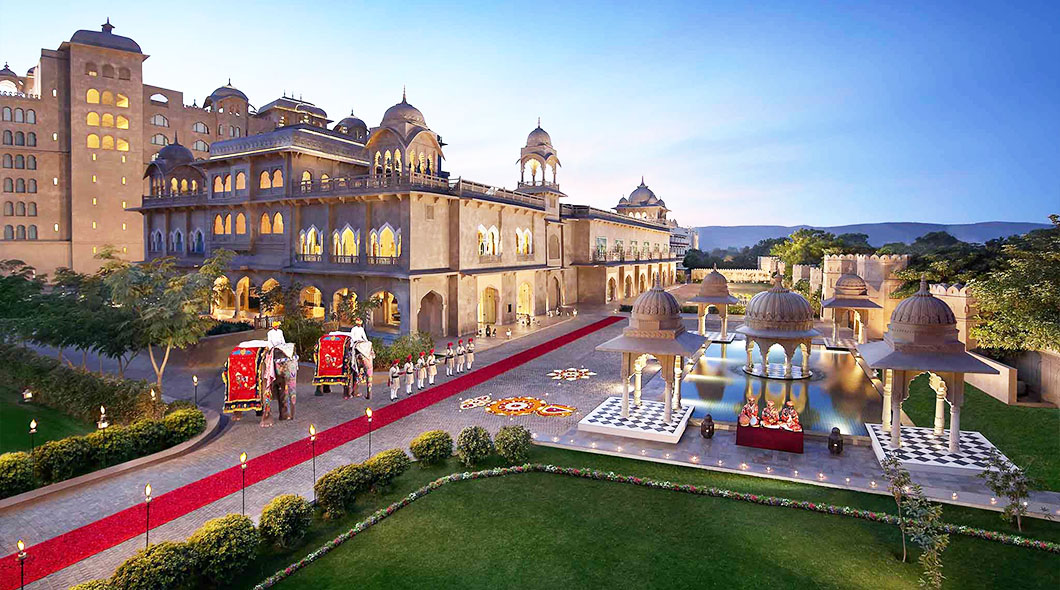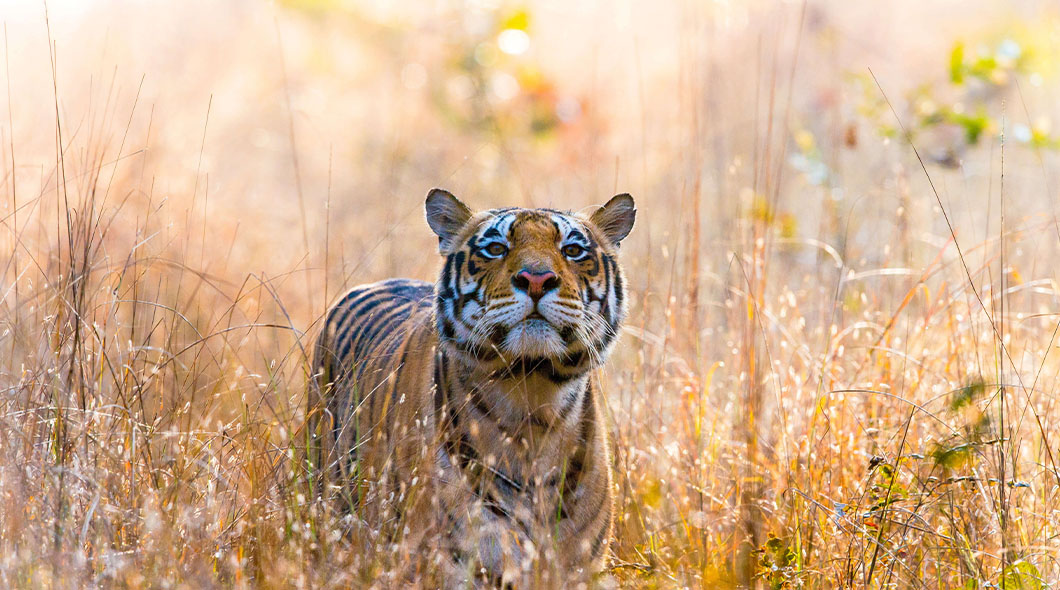Nestled amidst the tall, towering Himalayas, Kinnaur Kailash stands as a majestic mountain range, drawing travelers and devotees alike from all across the world. Located in the Kinnaur district of Himachal Pradesh, this sacred mountain holds deep spiritual significance in both Hinduism and Buddhism. Its towering height of 6050 meters offers a breathtaking panorama, with views extending to neighboring ranges such as the Dhauladhar in the south and the Zanskar peak at the Indo-Tibetan border.
However, what’s important to note here is that Kinnaur Kailash is not accessible throughout the year. Considering this, it becomes crucial to plan your trip accordingly to experience the best of this heavenly abode.
Religious Significance of Kinnaur Kailash
Kinnaur Kailash is more than just a mountain; altogether it is a truly spiritual experience that you must encounter at least once in your lifetime. The sunrise here, where the vibrant rays of the sun seem to emerge from the mountain, holds a deep mystical allure.
According to local legend, this phenomenon demonstrates the divine presence of Lord Shiva and Goddess Parvati, who are believed to reside in Kinnaur Kailash. The vibrant light in the mornings is said to emerge from Lord Shiva’s third eye, symbolizing a powerful positive energy that covers the region.
The Legend of Kinnaur Kailash
The legend of Kinnaur Kailash is steeped in Hindu mythology, specifically the tale of Lord Shiva and the demon Bhasmasura. Bhasmasura, through his intense meditation, received a boon from Lord Shiva that allowed him to turn anyone into ash by placing his hand on their head. However, when Bhasmasura attempted to use this power against Lord Shiva, the deity had to evade him to protect the world. It is said that Lord Shiva ultimately destroyed Bhasmasura at Kinnaur Kailash, making it a site of great significance in Hindu lore.
Panch Kailash: The Five Sacred Peaks
Kinnaur Kailash is a part of the Panch Kailash, or the five most sacred peaks in Hinduism, each associated with Lord Shiva. These peaks are believed to be the abodes of the deity and are considered highly auspicious. Pilgrims who visit these five peaks in their lifetime are believed to attain salvation and eternal bliss.
The Panch Kailash includes the following peaks:
Mount Kailash: Located in the Tibet region of China, Mount Kailash is believed to be the spiritual center of the universe. It is considered one of the most sacred mountains in Hinduism, and Buddhism. Till today, no one has ever been able to climb to the peak of this mountain except Monk Milarepa.

Manimahesh Kailash: Situated in the Chamba district of Himachal Pradesh, India, Manimahesh Kailash is associated with a legend from Hindu mythology. It is believed that Lord Shiva created this mountain after his marriage to Goddess Parvati. The Manimahesh Lake, located at the base of the mountain, is considered sacred, and circumambulating it is said to absolve devotees of their sins.

Adi Kailash: Also known as Chota Kailash, Adi Kailash is located in the Kumaon region of Uttarakhand, India. It is believed to be a replica of Mount Kailash and holds great significance for devotees. Lord Shiva is said to have meditated here, earning him the title of Adi Yogi (the first yogi).

Kinnaur Kailash: Kinnaur Kailash is a beautiful mountain range located in the Kinnaur district of Himachal Pradesh, India. The Shiva linga here is a monolithic pillar, that stands at a height of 4800 meters. The idol is said to change its color four times a day – white at dawn, yellow during the day, red at dusk, and finally black at night.

Shrikhand Kailash: Located in the Jaun village of the Kullu district in Himachal Pradesh, India, Shrikhand Kailash Peak is where you can find one of the largest Shiva lingas in the country. However, note that it is open for tourism only during the Shravan months of July and August. Hence, it’d be best to plan your visit accordingly.

The Kinnaur Kailash Trekking Itinerary
The Kinnaur Kailash trek is a challenging yet rewarding journey that takes you through some of the most breathtaking landscapes in the Himalayas. The trek typically lasts for 10 to 12 days, depending on your starting point and the pace of your trekking group. It is advisable to undertake this trek during the months of August to September when the weather is relatively stable and the mountain is open for visitors.
Day 1: Shimla to Powari
Your journey begins in Shimla, where you can explore Mall Road, the ridge, and the different churches in the region to acclimatize to the high elevations. From Shimla, you will drive to Powari, a journey that takes about 9 hours. En route, you can stop at the Sutlej River Gorge to admire the scenic beauty of the river and visit the Bhimkali temple in the Sarahan village.
Day 2: Powari to Ganesh Park
On the second day, you will start your trek from Powari to Ganesh Park. This trek covers a distance of approximately 8 km and can take anywhere between 5 to 6 hours. Along the way, you will pass through rolling valleys with exotic wildflowers, offering panoramic views of the snow-laden mountains in the Kinnaur Valley and glimpses of dense pine forests. You will set up your camp at Ganesh Park for the night.
Day 3: Ganesh Park to Ganesh Cave
The third day of your trek will take you from Ganesh Park to Ganesh Cave. This part of the trek is a 4 km climb that can be a little challenging due to the rugged terrain. You will pass through rhododendron forests and sprawling meadows, with stunning views all around. Once you reach Ganesh Cave, you can explore the surroundings and take some time to meditate and seek blessings from Lord Ganesha.
Day 4: Ganesh Cave to Kinnaur Kailash
On the fourth day, you will embark on the most challenging part of the trek, from Ganesh Cave to Kinnaur Kailash. This trek covers a distance of approximately 14 km and can take anywhere between 10 to 12 hours. The terrain is rocky, with narrow ridges and steep ascents, hence can get a bit intimidating. However, the stunning views of the Kinnaur Kailash mountain range, including Mount Kailash, Raldang, and Jorkaden, make it all worthwhile. Most trekkers spend about an hour at Kinnaur Kailash, seeking blessings from the Shiva linga and exploring the Parvati Kund before retracing their steps back to Ganesh Park.
Day 5: Ganesh Park to Powari
The fifth day of your trek will take you from Ganesh Park back to Powari, covering a distance of 7 km in about 5 hours. This part of the trek allows you to enjoy the beauty of the mountains one last time before heading back to civilization. Once you reach Powari, you can explore the local markets and enjoy some delicious food from the region.
Day 6: Powari to Shimla
On the final day of your trek, you will drive back from Powari to Shimla, a journey that takes about 9 hours. Along the way, you can enjoy the scenic views of the valley, surrounding pine forests, and the rippling flow of the Sutlej River, which originates from Mount Kailash and meanders its way through the Kinnaur Valley.
Overall, the Kinnaur Kailash trek is a challenging yet spiritually rewarding journey that offers a unique glimpse into the majestic beauty of the Himalayas. It is a journey that will not only test your physical endurance but also fill your heart and soul with a sense of peace and tranquility that can only be found in the lap of nature.
Budget to Visit Kinnaur Kailash
The exact dates for the Kinnaur Kailash Yatra 2024 have not been released yet, but it typically begins at the end of July and lasts till September. This period is chosen because it marks the end of the monsoon season, making it safer for trekkers to navigate the challenging terrain.
For travelers planning to undertake the Kinnaur Kailash trek, it is advisable to budget approximately 20,000 to 25,000 INR per person. This budget typically includes the following:
– Travel – bus or private transport fares.
– Accommodation: guesthouses, tents, or homestays.
– Meals: includes breakfast, lunch, and dinner.
– Permits: the entry fee to the Kinnaur Kailash region.
– Guide: The cost of hiring a guide, especially for first-time trekkers or those unfamiliar with the terrain.
It is important to note that the budget may vary depending on factors such as the duration of the trek, the number of days spent in Kinnaur, and the level of comfort desired during the journey.
Permits and Documentation
Before starting on the Kinnaur Kailash trek, make sure to carry all the following documentation:
- Government ID proof: This can be an Aadhar Card, Driving License, or Passport.
- Medical Certificate of Fitness: Travelers need to fill out a medical certificate of fitness at the Kinnaur district headquarters. This ensures that they are physically fit to undertake the trek.
- Second Medical Certificate: This certificate must be filled out by a registered medical practitioner and certifies the traveler’s fitness for the trek.
Travelers can obtain more information about the required documentation and permits from their trekking guides or local authorities. Also, due to the popularity of the Kinnaur Kailash trek, it is best to plan the trip well in advance. This includes booking accommodations, securing permits, and arranging for transportation.
How to Reach Kinnaur?
Here are the different modes of travel to reach Kinnaur:
By Air
The nearest airport to Kinnaur is in Shimla, known as the Shimla Airport or Jubbarhatti Airport. From Shimla, travelers can take a bus or private taxi to Kinnaur district headquarters or Kalpa, which serves as the base for the Kinnaur Kailash trek. Alternatively, travelers can fly to Chandigarh Airport and then proceed to Shimla by road before heading to Kinnaur.
By Rail
The nearest railway station to Kinnaur is in Shimla. Travelers can take a train to Shimla Railway Station and then proceed to Kinnaur by road. Another option is to take a train to Kalka Railway Station, which is about 303 km away from Kalpa, and then continue the journey to Kinnaur by road.
By Road
Traveling to Kinnaur by road is a popular option, offering stunning views of the Himalayas and the surrounding landscape. Buses are available from Shimla to Kinnaur district headquarters or Kalpa. Travelers can also opt for private transport or hire a taxi from Shimla to reach Kinnaur.
From Kinnaur District Headquarters
Once in Kinnaur district headquarters, travelers can explore the nearby areas and acclimatize to the high altitude before starting the Kinnaur Kailash trek. The headquarters also serves as a base for those who prefer to start the trek from a lower altitude.
Also Read : Pondy Marina Boat House : Where Memories are Made
Conclusion
A journey to Kinnaur Kailash is not just a physical trek; it is a spiritual experience that leaves a lasting impact on the mind and soul. As you get on this sacred journey, you are not only greeted by the exotic beauty of the Himalayas but also by the profound sense of peace and serenity that spreads across the region.







Comments are closed.